This post may contain affiliate links. Please read our disclosure policy.
This homemade Tiger Nut Milk (aka Horchata De Chufa) is a delicious new dairy-free milk recipe to add to the collection. Creamy, sweet, and requiring only two ingredients to make – it’s also vegan, GF, dairy-free, lactose-free, and nut-free too!
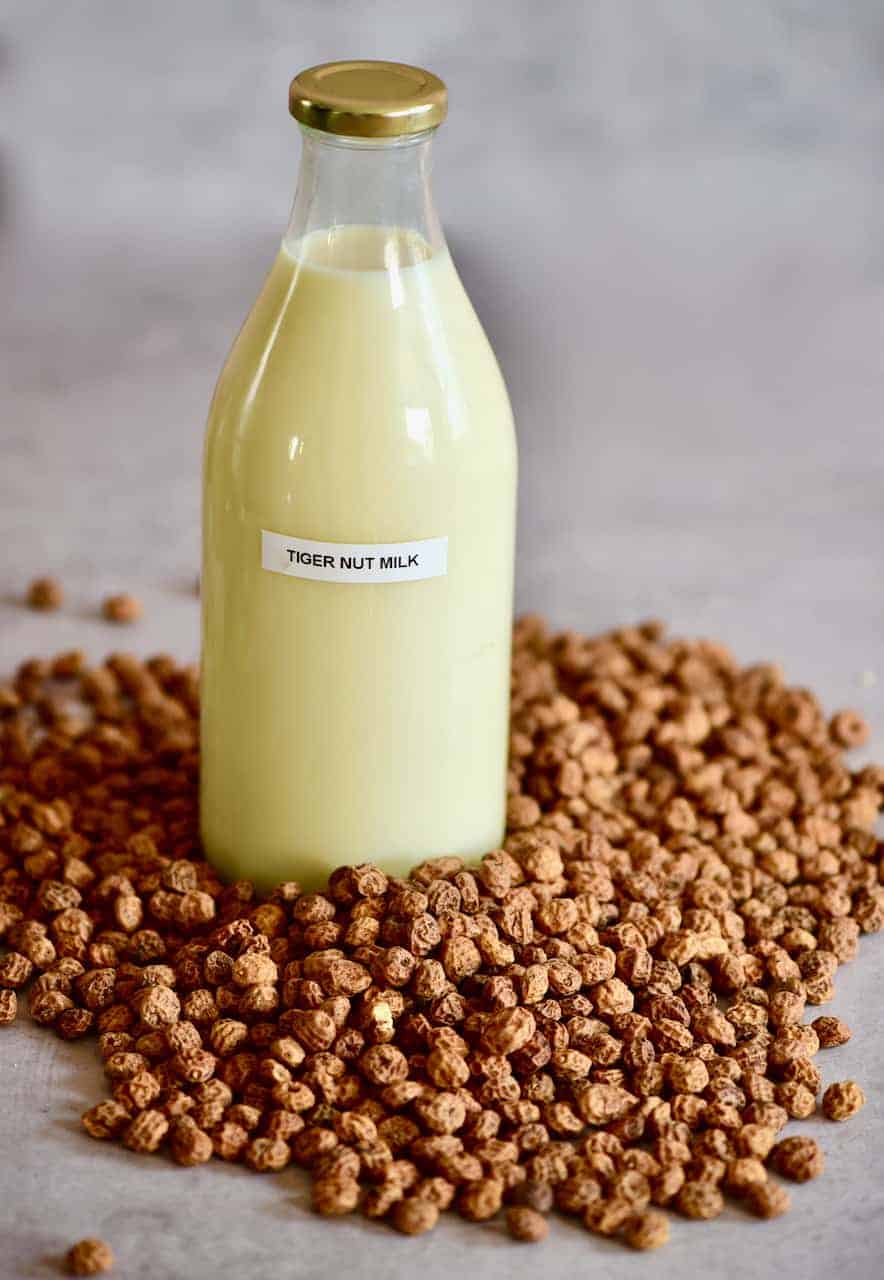
You may have noticed that I’ve been on a bit of a dairy-free milk kick at the moment – with recipes for a wide variety of nut milks, oat milk, rice milk, soy milk, etc. So how could I not add this homemade tiger nut milk recipe to my collection?
Now, you may be wondering what are tiger nuts. Have no fear; the answers are all below in the blog post. As well as how to eat tiger nuts pulp leftover from the milk-making process.
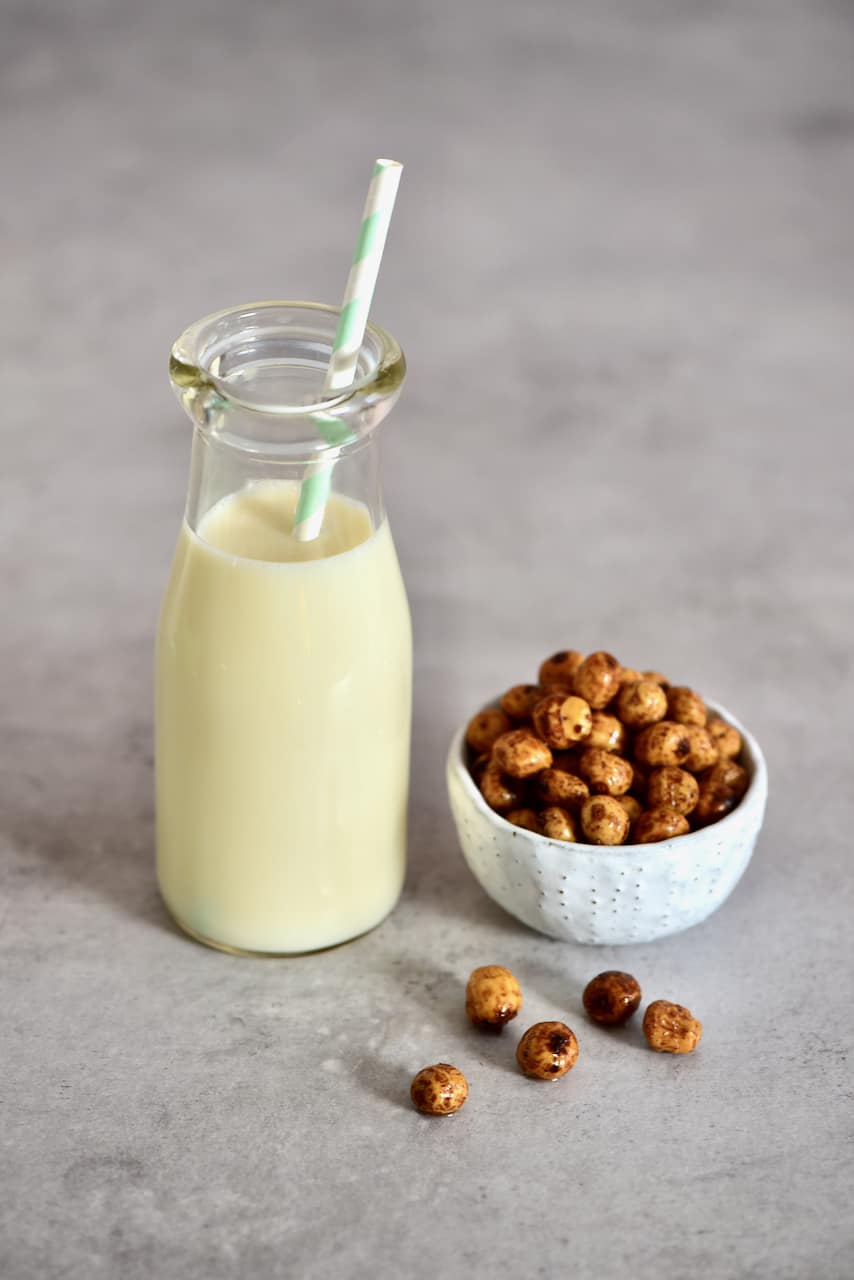
While tiger nut milk isn’t as widely acknowledged as certain other dairy-free milk options here in the UK, it is a beloved drink in Spain. This drink is called horchata de chufa and is served ice-cold in the hot summer months. It is also consumed in Mexico with cinnamon and vanilla.
However, it is also a great everyday dairy-free milk option all year round and definitely worth trying.
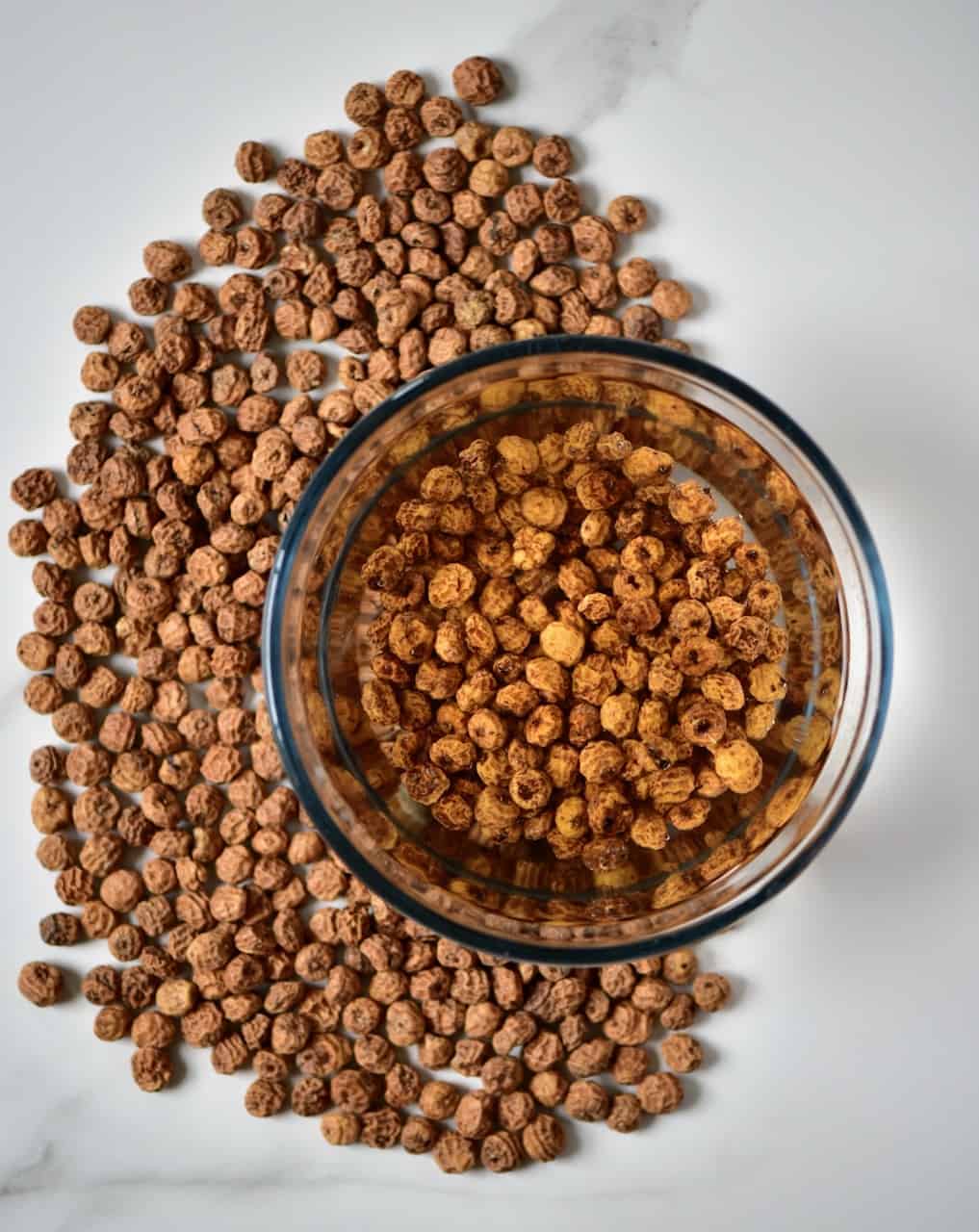
Want to save this recipe?
What are tiger nuts?
First things first, tiger nuts aren’t actually nuts. Nor do they have anything to do with tigers. Tiger nuts (aka cyperus esculentus) are a part of the ‘tuber’ family, like potatoes and artichoke – which means they’re an excellent alternative for those with nut allergies and grain allergies.
- Tiger nuts are a fantastic food for a majority of diet choices; paleo, gluten-free, vegan, low FODMAP, grain-free, whole food, etc.
- They have a few names including tiger nut, chufa, earth almond, yellow nutsedge, etc. and were originally cultivated in Egypt as far back as 4000bc.
- In terms of taste, it can be a bit hard to describe. Some day they are similar to almonds with a rich, nutty flavor. However, they are also naturally sweeter – with others likening them more to coconut.
What about tiger nut nutritional value?
Tiger nuts are a rich source of a variety of vitamins, minerals, and other good plant compounds. This includes containing high levels of Vitamin E (278% of your DV, in fact, in a 1oz serving) and Iron. They also contain good amounts of Vitamin C, phosphorus, magnesium, zinc, and potassium.

How to make tiger nut milk in six easy steps
Tiger nut milk is a great alternative to cows milk and creates naturally sweet, nutty plant-based milk. Here is the recipe to make tiger nut milk in just a few simple steps.
Ingredients
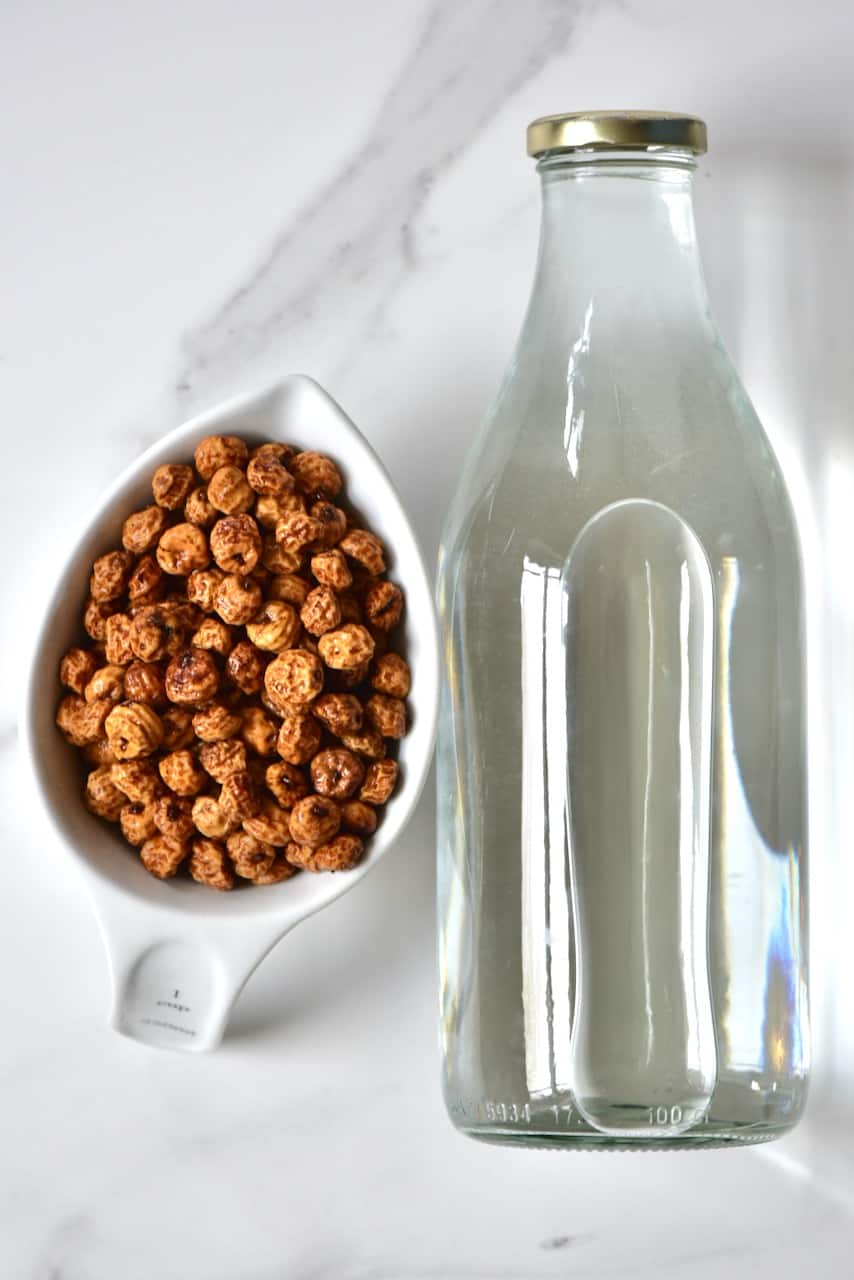
All you need is:
- tiger nuts
- filtered water
Steps
Start by soaking the tiger nuts for six hours or overnight. They will swell in size ever so slightly and will make them easier to blend into creamy, smooth milk.
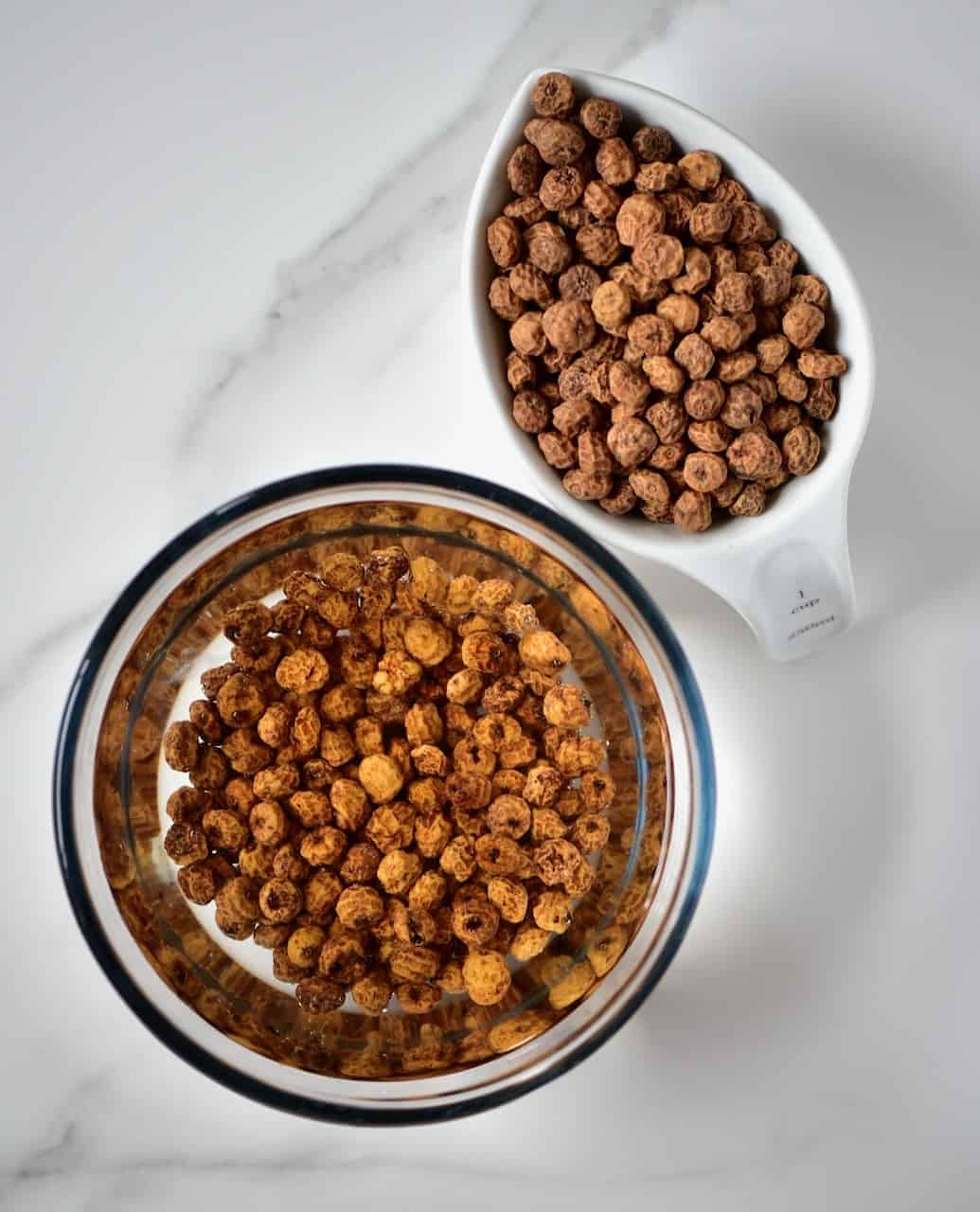

Add the soaked tiger nuts into a high-speed processor/blender. Blend the nuts down to rough pieces.
Add the 4 cups of water and blend again till creamy and smooth. This usually takes between 2-3 minutes.
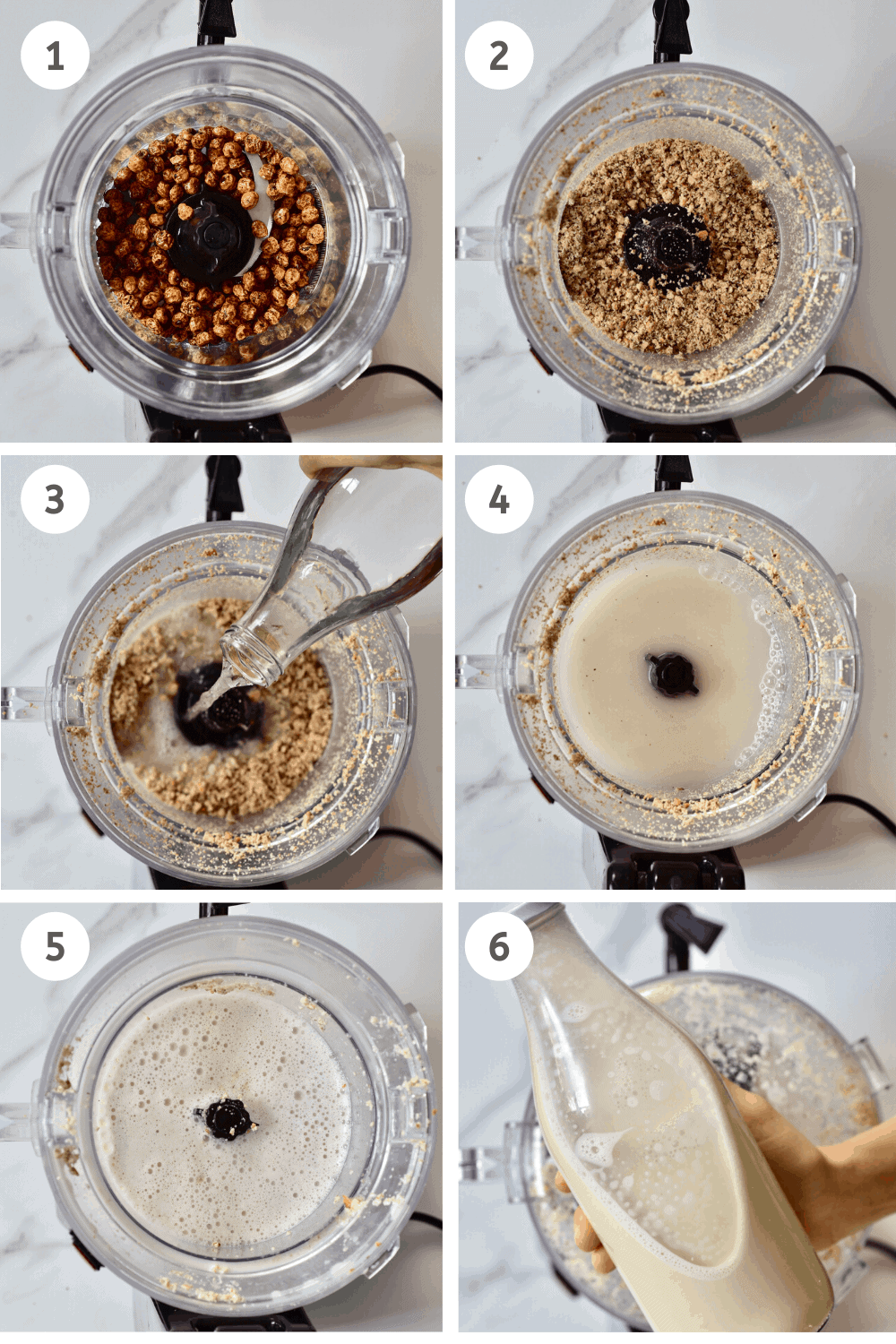
After blending the nuts with the water, pour the liquid into a bowl through a nut milk bag. Squeeze the nut milk bag to get all the milky liquid out. Then pour into a bottle.
You could also use a fine-mesh sieve and press out the leftover tiger nut pulp to drain any liquid.
The leftover tiger nut pulp can easily be made into flour by leaving it to dry (or dehydrating it at a very low temperature in the oven). This can then be used in a variety of bakes and works similarly to almond flour, although is slightly sweeter. The tiger nut flour can then be used for crackers, no-bake bars, pancakes cookies, etc. Alternatively, you could leave it wet and blend it into smoothies
Store in a glass bottle in the fridge for 3 days. You will notice it begins to smell slightly sour as it spoils.
Note* before using it, give the bottle a good shake to mix up any loose sediment at the bottom of the bottle – Then, you’re good to go.
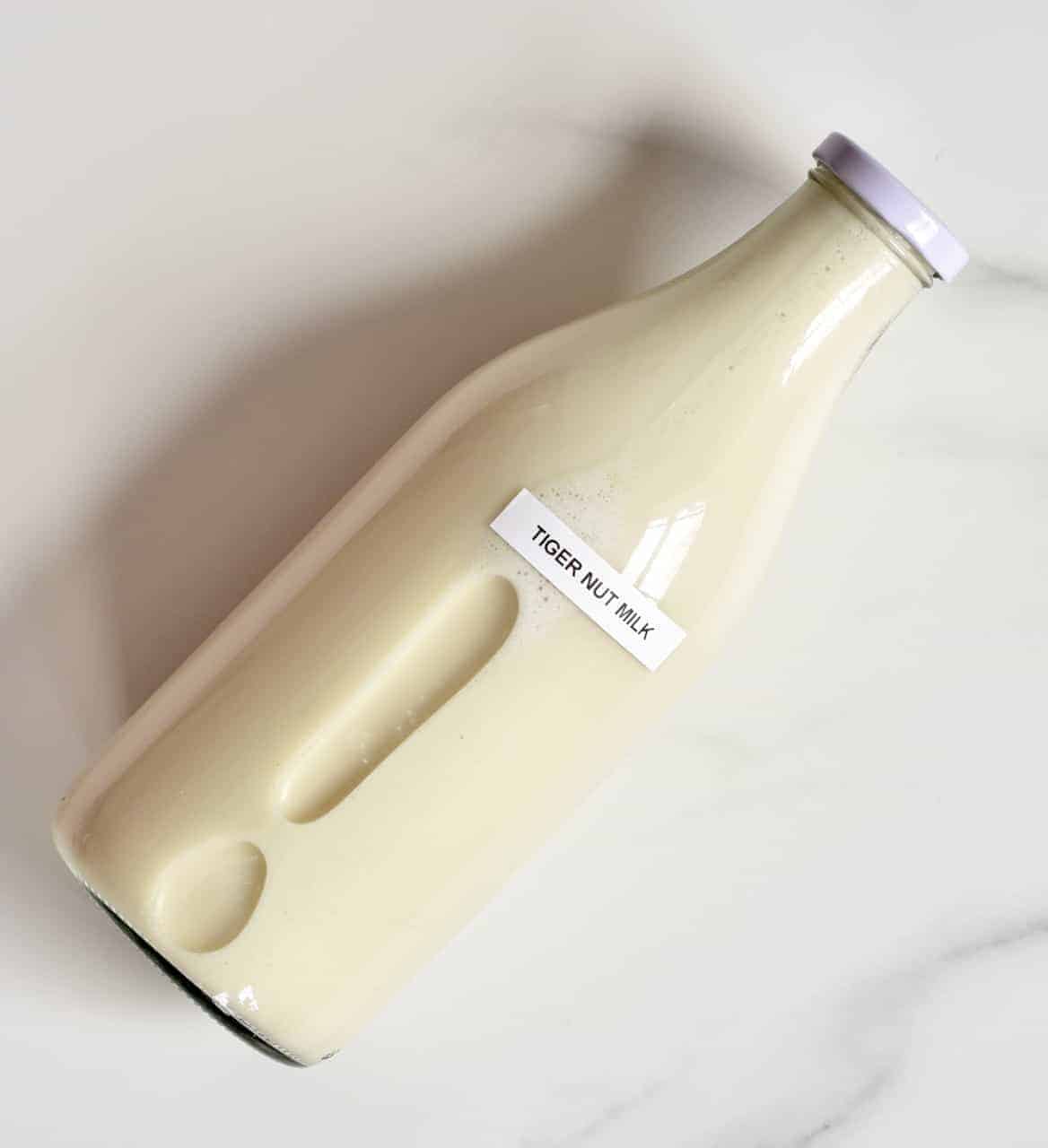
Other simple DIYs
If you’re interested in trying some more delicious dairy-free milk recipes, then look no further. I have a variety of different dairy-free milk recipes on my blog including this Homemade Oat Milk ( that isn’t slimy), Zero Waste Homemade Almond Milk, and How-to: DIY Homemade Coconut Milk.
For the full list, feel free to browse through the DIY section of my blog or search ‘milk‘ in the search bar for options including rice, soy, cashew, walnut, etc.
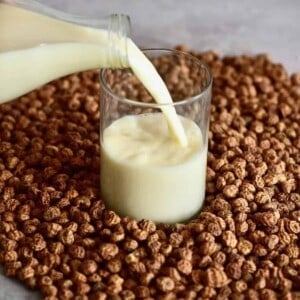
Homemade Tiger Nut milk (Horchata De Chufa)
Equipment
Ingredients
- 1 cup Tiger Nuts
- 4 cups filtered water
Instructions
- Start by soaking the tiger nuts for six hours or overnight. They will swell in size ever so slightly and will make them easier to blend into creamy, smooth milk.
- Add the soaked tiger nuts into a high-speed processor/blender. Blend the nuts down to rough pieces.
- Add the water and blend again till creamy and smooth. This usually takes between 2-3 minutes.
- After blending the nuts with the water, pour the liquid into a bowl through a nut milk bag. Squeeze the nut milk bag to get all the milky liquid out. Then pour into a bottle. You could also use a fine-mesh sieve and press out the leftover tiger nut pulp to drain any liquid.
- Store in a glass bottle in the fridge for 3 days**.
Video
Notes
Nutrition
Nutrition information is automatically calculated, so should only be used as an approximation.










Hello, do you use peeled or unpeeled tiger nuts when making milk? Possibly a stupid question, but I’m new to tiger nuts and see that they are available with and without peels. Thank you!
Hi there,
You can use either peeled or unpeeled tiger nuts – whatever you have. Make sure to soak them before blending, whether they are peeled or unpeeled. I hope this helps.
Hi Samira, thank you for sharing your recipe. I’ve read through your recipe and all of the comments but still cannot find how much one recipe (1 cup tiger nuts + 4 cups water) yields. For example, will you please explain how many 8 oz. servings one recipe creates. Many thanks!
Hi Tamera,
Thank you so much for your comment.
With 1 cup of tiger nuts and 4 cups of water, you will get just about 4 cups of nut milk. This means you will have 8 servings of 8 oz each. I hope this helps.
How long should I leave the tiger nut pulp to dry for flour? I’ve left it in a bowl covered but I’m thinking it might go bad if it’s still wet?
Hi Daneta.
It’s best to spread it in a thin layer over a large plate or a tray so it can dry faster, though it can still take a few days if just air drying. You can also dry it in the oven at low temperature (around 175ºF/80ºC for a few of hours). The pulp should be completely dry and crumbly when done. If it remains wet for long, it will go bad. Alternatively, you can keep it in the fridge or freezer and add it “wet” to breakfast bowls or smoothies. I hope this helps.
Very insightful. Please how can I get the nuts in Canada? You you add coconut to it?
Hi Joy,
You can check online retailers, health food stores, or farmer’s markets. You can indeed flavor it with coconut if wanted. I hope this helps.
Hi,
Have you ever made a milk from poppy seeds? Or perhaps sunflower seeds.
If so, then how did it turn out?
Kind regards
– Sebastian
Hi Sebastian,
You can make milk from either poppy seeds or sunflower seeds. The process is quite similar to making tiger nut milk or other nut/seed milks. You first need to soak the seeds, then blend them with water, and finally strain the mixture. Let me know if you give it a try!
It is a 3 day shelf life- does 3 days include the day you made the milk?
Hi Ashley,
Yes, you need to start counting from the day it was made. It can last 3 or up to 4 days when stored properly in the fridge in an airtight container/bottle. But it’s best to check for signs of spoilage (an off smell or unusual texture) before consuming. I hope this helps.